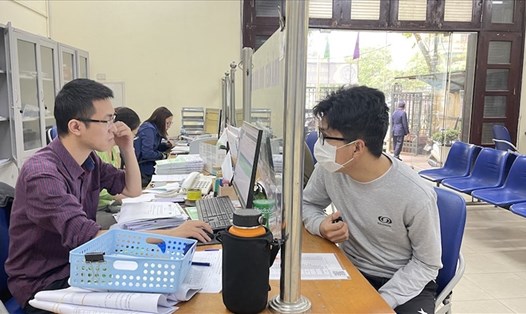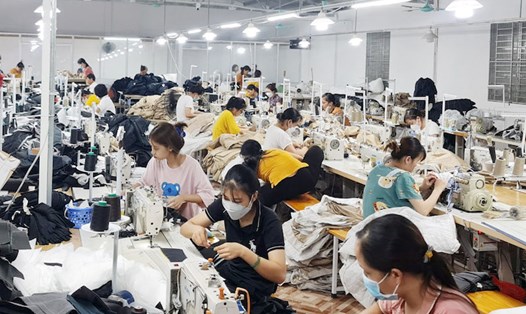Ms. Pham Thi Hien (43 years old) - a leather shoe worker at Amara Vietnam Shoe Company Limited (Nam Dinh) - shared that after 8 years of working, the regional minimum wage has not increased significantly.
The female worker started working at the company in November 2016, when the regional minimum wage was 3,100,000 VND/month. After 8 years, it increased to more than 4 million VND. Without allowances or overtime, it is difficult to ensure a living.
Ms. Hien said that at present, if she only works during office hours, all the allowances will only be 6.5 million VND. To achieve a salary of more than 10 million VND, Ms. Hien must work nights and overtime at least 3 hours/day.
As a group of long-time workers, Ms. Hien has seniority and responsibility. Newcomers are busy with personal matters and have small children, only working office hours, and their income does not exceed 5.5 million VND/month.
Not only that, with an income of over 10 million VND, Ms. Hien's team has cut 30% of its workforce compared to before. This means that Ms. Hien alone has to do the work of 1-3 people, which is extremely hard and stressful, causing her health to decline more and more.
According to the female worker, in 2025, the regional minimum wage should continue to increase by at least 10%. With this increase, Ms. Hien said, it will help increase income from 600,000 VND to 1 million VND/month to keep up with market prices and match the efforts put in.
Mr. Dang Van Hau (34 years old) - a garment worker in Nam Dinh said that he is very interested in the insurance benefits he will receive in the future. Therefore, although working under a contract (paid according to output), Mr. Hau still hopes for an annual increase in the regional minimum wage.
“I have withdrawn my social insurance once, so I feel quite regretful. Now I am starting from scratch, hoping that the regional minimum wage will increase every year. That way, I only need to pay social insurance for 20 years to have a reasonable pension,” Hau shared.
According to Mr. Hau, the monthly insurance salary paid by the company is higher than the regional minimum wage, but not much, and there are no accompanying allowances. Only when the State increases the regional minimum wage will Mr. Hau's monthly insurance salary increase accordingly.
"The 6% increase in 2024 cannot keep up with the essential daily expenses. Electricity bills and school fees for children increase every year, not to mention the increase in rice and meat prices," said Mr. Hau.
The male worker hopes that the government needs to control market prices well. According to Mr. Hau, if prices cannot be controlled, even if they increase by 15%, it will be difficult for workers to ensure their livelihoods.
Recently, the Ministry of Labor, War Invalids and Social Affairs continued to review and evaluate the minimum living standards of workers and their families; in relation to market wages; consumer price index, to propose and recommend to the Government a suitable regional minimum wage plan...
Regional minimum wage is the lowest wage that employers pay to employees working under normal working conditions, to ensure the minimum living standard of employees and their families, in accordance with socio-economic development conditions.
Regional minimum wages are applied to employees working under labor contracts as prescribed by the Labor Code.











